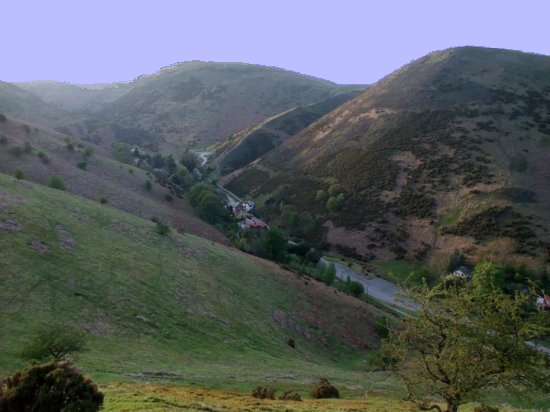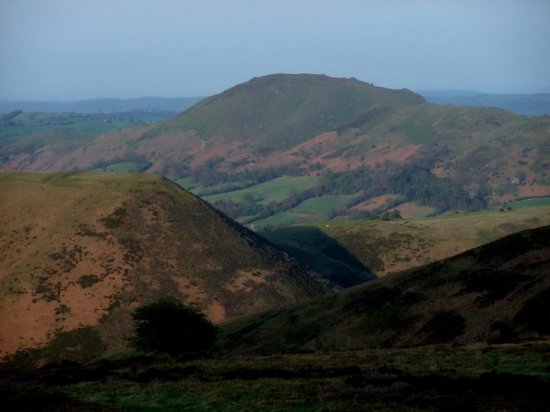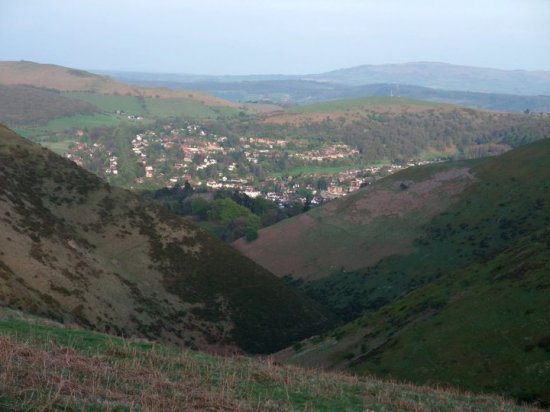After living in the dreary North Midlands all my life, I finally managed to escape to the coast. I have never been a fan of the Midlands and have always wanted to live by the sea.
In 2009 I met Jane, who also had the same long-standing ambition. We decided that the time was right to realise our dreams.
There are some things we will miss, not least being so close to the Derbyshire Dales and the beautiful Peak District. It is also a shame to leave old friends behind, but the distance from Skegness to Nottinghamshire has not been so restrictive that our friends haven't come and stayed with us. The North Midlands has often been considered one of the friendliest places in the UK - a fact I wholeheartedly agree with.
One thing is for certain, radio reception possibilities should dramatically increase by the sea. The east coast will be a perfect location for many forms of DX, especially on the FM broadcast band as it's almost empty! So I plan to continue my FM and MW broadcast DX hobby in earnest. Jane and I are looking forward to our new life by the sea and experiencing a new world of radio.
In 2009 I met Jane, who also had the same long-standing ambition. We decided that the time was right to realise our dreams.
There are some things we will miss, not least being so close to the Derbyshire Dales and the beautiful Peak District. It is also a shame to leave old friends behind, but the distance from Skegness to Nottinghamshire has not been so restrictive that our friends haven't come and stayed with us. The North Midlands has often been considered one of the friendliest places in the UK - a fact I wholeheartedly agree with.
One thing is for certain, radio reception possibilities should dramatically increase by the sea. The east coast will be a perfect location for many forms of DX, especially on the FM broadcast band as it's almost empty! So I plan to continue my FM and MW broadcast DX hobby in earnest. Jane and I are looking forward to our new life by the sea and experiencing a new world of radio.
January 2011 Update
It's now been four months since our move and we are feeling very settled in our new home!
Moving to the east coast has been one of the best things we did: The air quality is so much cleaner for starters. You can actually see the stars and the Milky Way in the night sky; We live within walking distance of the beach; We have some of the best beaches in the world too; We are a stone's throw from the Lincolnshire Wolds - a kind of mini Peak Ditrict and designated an "AONB" (Area of Outstanding Natural Beauty); We have peace and quiet, living right in the edge of town, overlooking fields for miles; We live close to some charming rural communities and country pubs (which serve a wealth of real ales) and we have several nature reserves close by, all natural habitats for some quite exotic wildlife, not to mention plenty of secluded areas suitable for beverage aerials!
The weather has been far from what we expected too. Thankfully, we missed the severe winter chill which was experienced further inland and only had a few inches of snow which lasted for two to three weeks. It's the first time we have ever seen snow-covered beaches! The locals tell us it is almost unheard of to have lying snow on this coast as it usually melts the moment it lands. We also discovered that the east coast is recognised as being the sunniest part of England. After living here for only four months we can only agree with this. It is usually sunny, with cloudless skies, even when the weather forecast predicts cloud! Even on the colder days of mid-winter you can actually feel the warmth of the sun. beating down on you, something I have never noticed inland.
The option to move to Skegness came quite unexpectedly. Personally, I had never considered Skegness as a town in which I wanted to live. My childhood memories of visits to this area were of endless amusement arcades with bingo callers, lots of noise, bright lights, overcrowded bars and fairground rides, but since living here and getting to know the place properly, I find it extremely pleasant and a hundred times better than my old location in Nottinghamshire. It has it's tacky side, but so do many UK holiday resorts. I actually find it a very pleasant, attractive town with plenty of open spaces and gardens. The surrounding countryside is beautiful. Just one thing, however, we are always amazed by the number of people who consider the nearby parish of Ingoldmells to be Skegness. While it might be classed as a suburb of Skegness, it is approximately four miles away and world's apart.
Did I mention radio? Ahem! Although we have only been here for a short time, several amazing DX possibilities have been realised. Medium wave has produced astonishing reception of broadcast stations from Japan, South Korea, India, Thailand, the Philippines, China, Taiwan, the US state of Alaska, plus the Canadian North-West Territories and British Colombia! We will erect the amateur radio aerials asap!
Broadcast DX on band 2 has also exceeded our expectations with a plethora of continental signals from France, Belgium, Netherlands, Germany, Luxembourg and even Spain! All this at a time of year when conditions are probably at their poorest. Band 2 is almost devoid of local stations here! The nearby giant Belmont mast does not present any problems. Even Portugal has been received via tropo here!
Moving to the east coast has been one of the best things we did: The air quality is so much cleaner for starters. You can actually see the stars and the Milky Way in the night sky; We live within walking distance of the beach; We have some of the best beaches in the world too; We are a stone's throw from the Lincolnshire Wolds - a kind of mini Peak Ditrict and designated an "AONB" (Area of Outstanding Natural Beauty); We have peace and quiet, living right in the edge of town, overlooking fields for miles; We live close to some charming rural communities and country pubs (which serve a wealth of real ales) and we have several nature reserves close by, all natural habitats for some quite exotic wildlife, not to mention plenty of secluded areas suitable for beverage aerials!
The weather has been far from what we expected too. Thankfully, we missed the severe winter chill which was experienced further inland and only had a few inches of snow which lasted for two to three weeks. It's the first time we have ever seen snow-covered beaches! The locals tell us it is almost unheard of to have lying snow on this coast as it usually melts the moment it lands. We also discovered that the east coast is recognised as being the sunniest part of England. After living here for only four months we can only agree with this. It is usually sunny, with cloudless skies, even when the weather forecast predicts cloud! Even on the colder days of mid-winter you can actually feel the warmth of the sun. beating down on you, something I have never noticed inland.
The option to move to Skegness came quite unexpectedly. Personally, I had never considered Skegness as a town in which I wanted to live. My childhood memories of visits to this area were of endless amusement arcades with bingo callers, lots of noise, bright lights, overcrowded bars and fairground rides, but since living here and getting to know the place properly, I find it extremely pleasant and a hundred times better than my old location in Nottinghamshire. It has it's tacky side, but so do many UK holiday resorts. I actually find it a very pleasant, attractive town with plenty of open spaces and gardens. The surrounding countryside is beautiful. Just one thing, however, we are always amazed by the number of people who consider the nearby parish of Ingoldmells to be Skegness. While it might be classed as a suburb of Skegness, it is approximately four miles away and world's apart.
Did I mention radio? Ahem! Although we have only been here for a short time, several amazing DX possibilities have been realised. Medium wave has produced astonishing reception of broadcast stations from Japan, South Korea, India, Thailand, the Philippines, China, Taiwan, the US state of Alaska, plus the Canadian North-West Territories and British Colombia! We will erect the amateur radio aerials asap!
Broadcast DX on band 2 has also exceeded our expectations with a plethora of continental signals from France, Belgium, Netherlands, Germany, Luxembourg and even Spain! All this at a time of year when conditions are probably at their poorest. Band 2 is almost devoid of local stations here! The nearby giant Belmont mast does not present any problems. Even Portugal has been received via tropo here!


